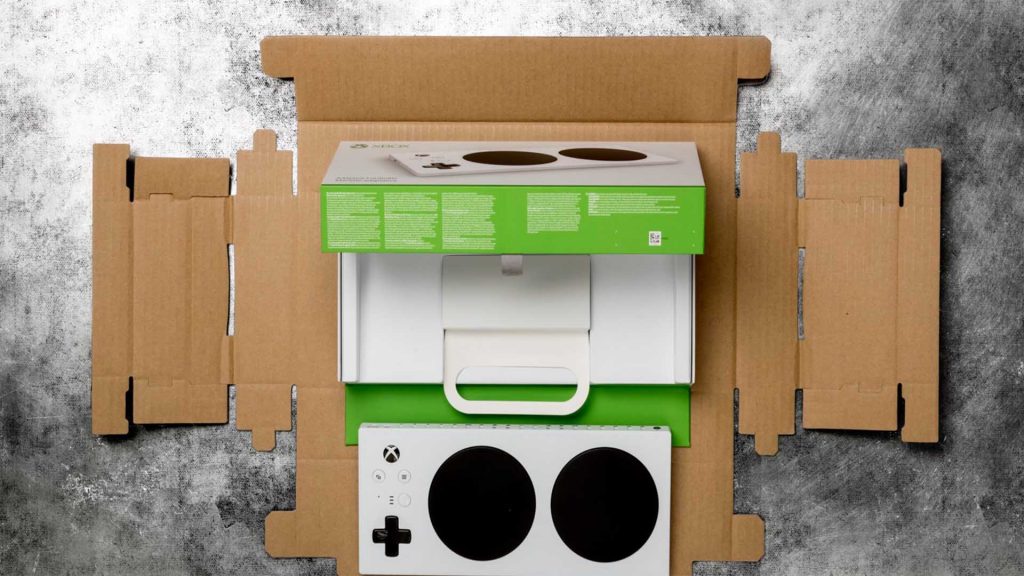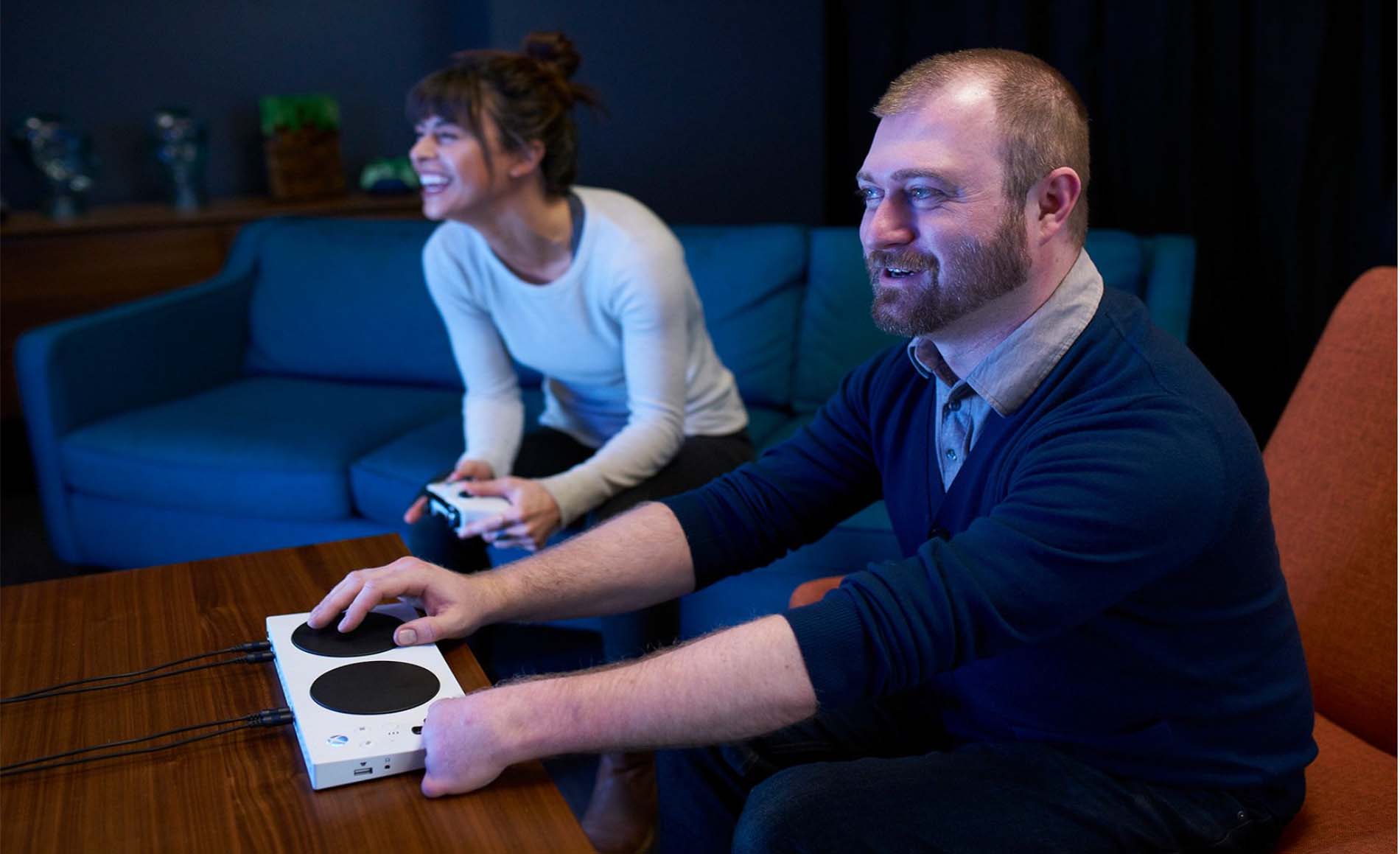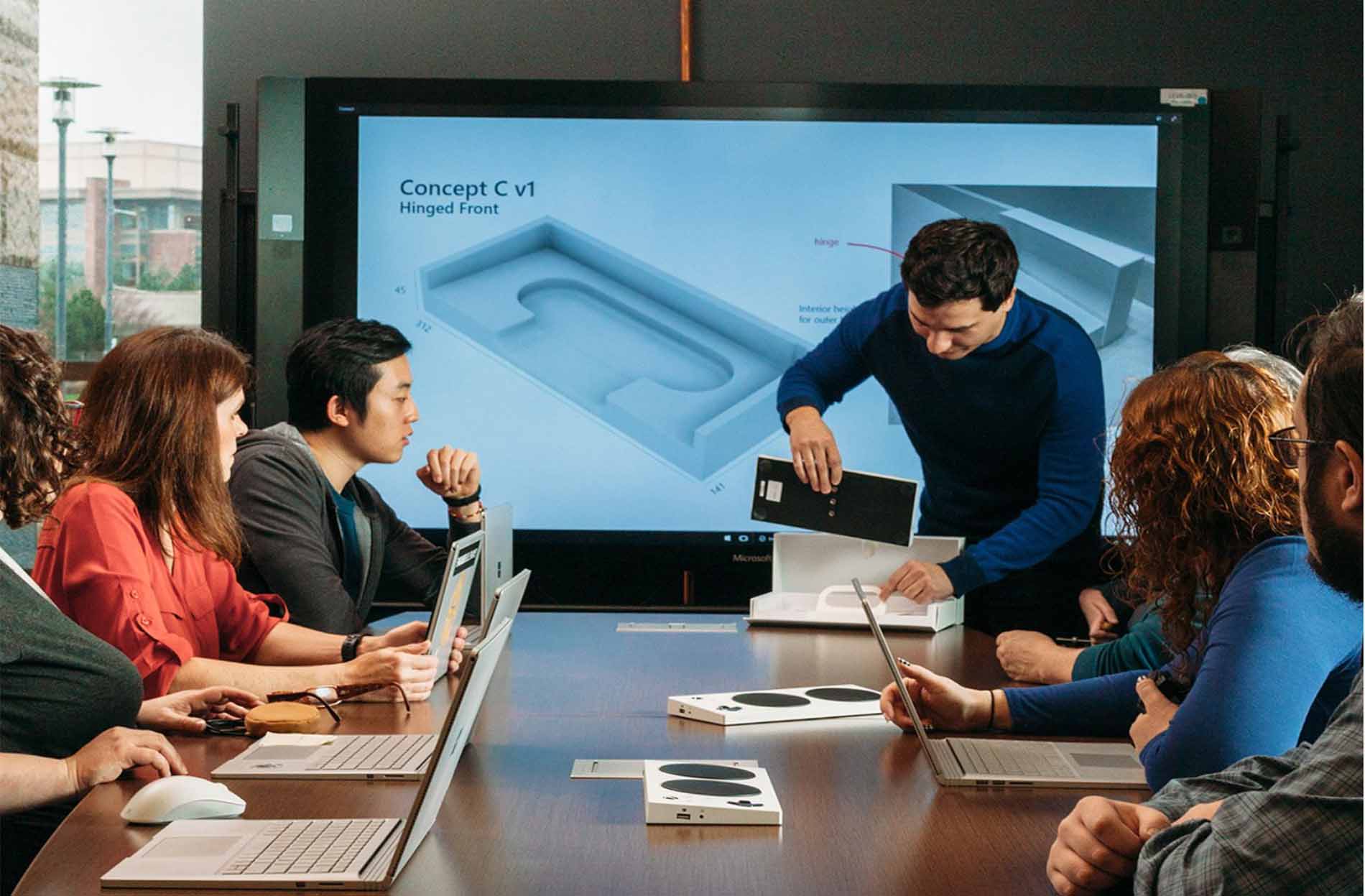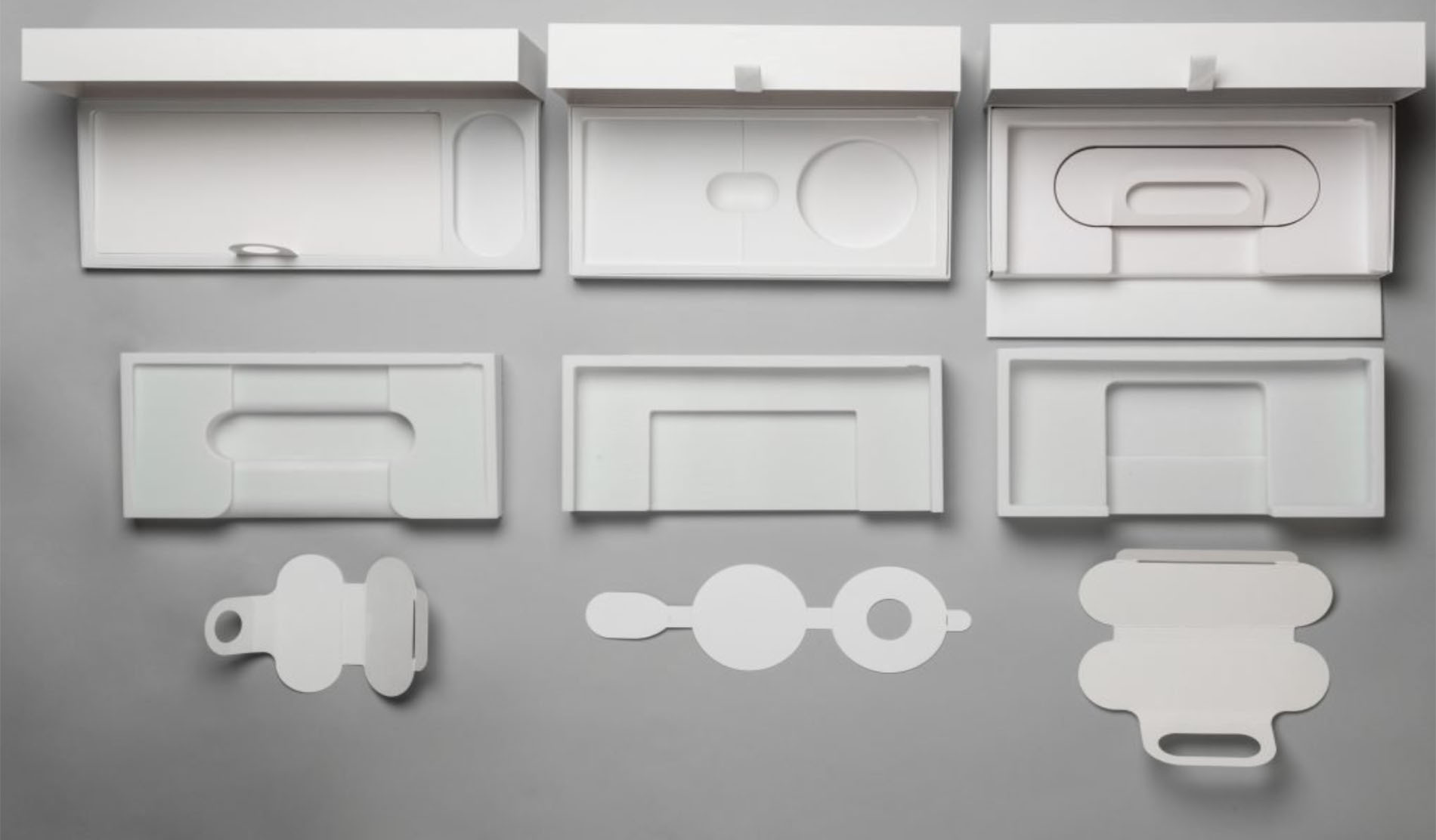
How gamers with disabilities helped design the new Xbox Adaptive Controller’s elegantly accessible packaging
Twist ties that bedevil. Thick plastic requiring scissors to break open. Tape that gets wrapped around fingers. Those cursed strips known as zip ties.
Packaging can be annoying for any consumer (see: wrap rage). But for people with disabilities, it often creates yet another challenge in a world riddled with them, an unnecessary obstacle that leads to frustration and a delay getting to the object inside.
Recognising that reality, Microsoft’s Packaging Design team faced a unique challenge in creating a box for the new Xbox Adaptive Controller, designed to accommodate gamers with limited mobility. The box for the device, available for pre-order now for $129.99 AUD from Microsoft Store, needed to be as accessible as what was inside. It had to enable gamers with limited dexterity, who might be using just one hand or arm, to easily open the box and remove the controller. And it had to be as high-quality and aesthetically appealing as any other Xbox packaging.
It was the first time Microsoft had created packaging designed specifically for accessibility, and getting it right was critical.
“The product team was putting so much diligence into getting the controller right that to not have a package that was thoughtfully and mindfully designed for the end user would have felt like a real miss,” said Kevin Marshall, creative director of Microsoft’s Packaging Design Studio.
“With this product in particular, we felt a heightened responsibility. We wanted to create a package that was clearly designed with the end user in mind, and we wanted it to feel like it was just part of our ecosystem,” he said. “We wanted it to be empowering, but we didn’t want it to stand apart from any package we create.”

Solomon Romney, a Microsoft Stores retail learning specialist in Salt Lake City, Utah, was among the gamers who tested the packaging as it was being developed. The extra attention to accessibility, he said, creates a positive experience from the start.
“It’s great that we’ve created this controller for people to use, but if they can’t even get it out of the box, we’ve sort of fallen on our face with this whole process. This makes such a huge difference in how someone gets our device out of the package,” he said. “I still think about it and think, why isn’t more packaging like this?”
Mark Weiser, the Microsoft designer who created the packaging, started by looking for examples of other accessible packaging. He found little that excited him, and even the accessible products Weiser looked at weren’t often packaged in ways that made them easy to open.
It benefits everybody to have a package that opens a lot faster, with less hassle.
Weiser worked closely with Xbox design researcher Scott Wang, who consulted with gamers and disability advocates as the Xbox Adaptive Controller was being developed. Their feedback helped shape many of the device’s features, including the packaging. Weiser had already decided not to use twist ties, but the gamers Wang spoke with provided other key insights, including one main stipulation — no teeth. They told Wang about using their teeth to open everything from cereal boxes to beer bottles. If nothing else, they said, the box should not require teeth to open.
The gamers also said they’d prefer more simple steps to open the box than fewer but more complicated steps. Being able to access the controller from multiple points was also important. And the gamers identified a feature that became a key part of the package’s design — loops that enable users to easily open the box and remove the controller.
Weiser added a loop on the outside of the specially designed retail shipping box so users could easily remove the sealing tape. Another loop opens the interior box holding the controller, which has a hinged opening rather than a lid that could require two hands to remove.
Yet another loop is integrated into the quick-start guide sitting under the controller. A user who can’t reach into the space under the controller and slide it out (another accessibility feature) can use the loop to remove it. And since the controller has grippy feet to hold it in place for gamers who might play on wheelchair trays or tables, the loop on the guide eliminates the possibility of the controller sticking to the paper tray under it. An additional loop on the paper encircling the controller cables makes them easy to remove.
Other accessibility features include folding the warranty and compliance guide on the long edge to minimise the amount of arm movement required and centering the controller in the box to provide greater stability.

The designs and materials used for the other components were also carefully considered. The retail box is made of a rigid paperboard that provides additional device protection and offers less resistance than other papers when opened. The pulp tray under the controller is open at the front for easy device removal, which required extra technical and design attention. Paper is the medium of choice for Microsoft packaging, as it’s more environmentally friendly, and plastics are avoided unless absolutely necessary.
Since Weiser was creating the packaging as the controller was being developed, he needed to adapt the box as the device evolved. Even small changes to the controller required him to reevaluate how the box interacted with it — for example, ensuring that the two large buttons added to the top of the device wouldn’t be clicked repeatedly if the box was jostled. The final packaging involved more than 100 iterations of its various components, Weiser said.
“It became an incredibly deep and broad scope of work,” Marshall said. “That’s part of the fun. That’s part of our learning process. We learn by doing. We learn by building, and on this particular product, there was a lot to learn.”
As he was developing the packaging, Weiser tested it with multiple Microsoft employees who have limited mobility. One of the employees, Weiser said, was doubtful he’d be able to open the box, given his usual difficulties with packaging. But to his surprise, it opened more easily than expected.
“It was really great to see him be excited about it,” Weiser said.

The Microsoft team also tested the packaging with several gamers in the United States and the U.K., including Mike Luckett, an avid gamer from Colorado who has limited mobility in his fingers from a spinal injury he sustained in a motorcycle accident. Luckett provided feedback on typical packaging pitfalls, from paper cuts caused by perforated or corrugated edges to the plastic covers some controllers come in, which he finds “incredibly frustrating” and difficult to open.
“I’m excited that Microsoft is taking the opportunity to try to understand individuals who have less ability to open a traditional package than able-bodied users,” he said. “Having this easy-to-open packaging doesn’t just benefit us in the disabled community. It benefits everybody to have a package that opens a lot faster, with less hassle, so you can game faster.”
Romney was shown three prototypes of the packaging. Born without fingers on his left hand, he tested the models using that hand only. Based on Romney’s feedback, the loops on the packaging were created in an oval shape to accommodate gamers who might not be able to navigate a smaller circular loop. Romney appreciated the loops and the overall ease and elegance of the packaging.
“The whole thing sort of blossoms open in this really beautiful, fluid way,” he said. “The package just sort of opens and hands you the controller. What’s wonderful about it is the effortlessness.”
I think as a case study of inclusive design, the Xbox Adaptive Controller is going to make a brilliant example of how you do it, and how you include your audience and design with a population, rather than for a population.
Romney said the experience has made him think about packaging differently.
“We have customers in our store every single day who buy product. I look at our laptop boxes and how they have to be opened. How many steps, how much packaging and how much of a barrier do each of those pieces become to someone with a mobility limitation?”
Romney thinks the Xbox Adaptive Controller packaging has the potential to set a new standard.
“I think it’s going to change how we look at things in the industry, in terms of how we make boxes. And I think it has to,” he said. “I think as a case study of inclusive design, the Xbox Adaptive Controller is going to make a brilliant example of how you do it, and how you include your audience and design with a population, rather than for a population.”
For Marshall and Weiser, the packaging project was challenging, time-consuming — and ultimately rewarding.
“It was a really powerful experience,” Marshall said. “I don’t think you realise, until you’re required to think differently, what you take for granted. As a designer, when you see things through a completely different lens, it’s paradigm-shifting.”
Said Weiser: “We put in a lot of extra time on it, but it was a pleasure to be able to work on this type of project. It’s great that we’re focused on this as a company.”
Discussions are underway about how Microsoft might use the learnings from the Xbox Adaptive Controller packaging. Marshall hopes the deceptively simple-looking box can serve as a springboard for future efforts.
“It’s certainly changing how we’re looking at packaging. We’re excited about moving forward from this point with a new lens and looking at what we can do,” he said.
“We’re really excited to take this journey on.”
The Xbox Adaptive Controller – complete with accessible packaging – is available for gamers in September of this year, and available for pre-order now for $129.99 AUD from Microsoft Store. Learn more about the Xbox Adaptive Controller here.














